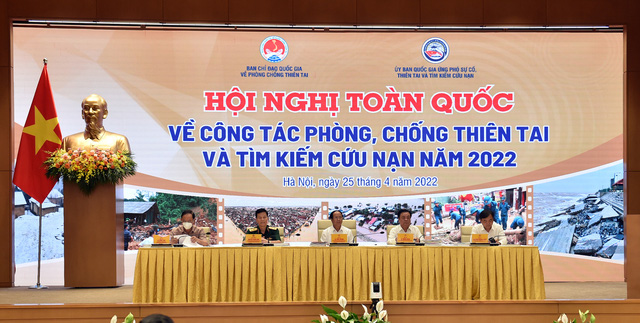Gov't convenes video-conference on natural disasters and abnormal weather
VGP - Deputy Prime Minister Le Van Thanh on Monday presided over a national video-teleconference on national disaster prevention, search and rescue work.

Deputy Prime Minister Le Van Thanh chairs video-conference on natural disaster prevention, search and rescue work
The video-conference drew the attendance of over 19,000 participants from all 63 provinces and cities.
Minister of Agriculture and Rural Development Le Minh Hoan reported that last year natural disasters claimed 108 lives and economic damage worth VND 5.2 trillion (nearly US$223.9 million), which is the lowest loss over the past decade.
However, since the beginning of this year, disasters have come complicatedly and unusually with unseasonal heavy rains accompanied by thunderstorms recorded on a large scale in central provinces in late March and early April, said Le.
Historic freezing temperature occurred in late February in the northern mountainous area, and earthquakes hit Kon Plong district in Kon Tum province, he added.
The National Center for Hydro-meteorological Forecasting said natural disasters are forecasted to continue extremely complicated and unusual development in 2022.
The center also said Viet Nam may record about 10-12 strong storms and tropical depressions while rainfall is expected to increase nationwide, with a high probability of extreme downpour.
REVIEWING PLANS ON DISASTER PREVENTION
Addressing the video-teleconference, Deputy Prime Minister Le Van Thanh, the Head of the Central Steering Committee for Natural Disaster Prevention and Control, Chairman of the National Committee for Natural Disaster Response, Search and Rescue, pointed out imporant tasks in which forecasting work represents the most important task.
He underlined the importance of early completion of the zoning maps and warnings of risks of landslides, tube floods, and large flash floods.
Le urged localities to immediately review their plans on disease prevention, consolidate grass-root disaster prevention forces to strengthen capacity in response to emergency cases.
In addition, IT application should also be stepped up in order to help people in disasters-hit areas access information.
The Deputy Prime Minister also asked localities to upgrade dykes, reservoirs, and build storm- and flood-resilient houses for poor families./.
